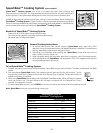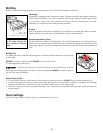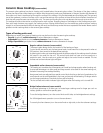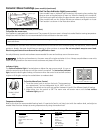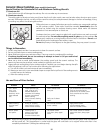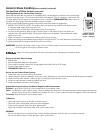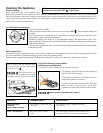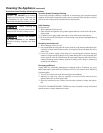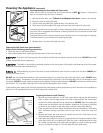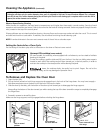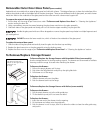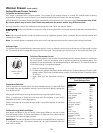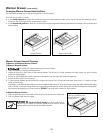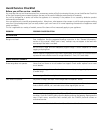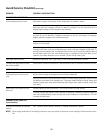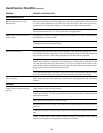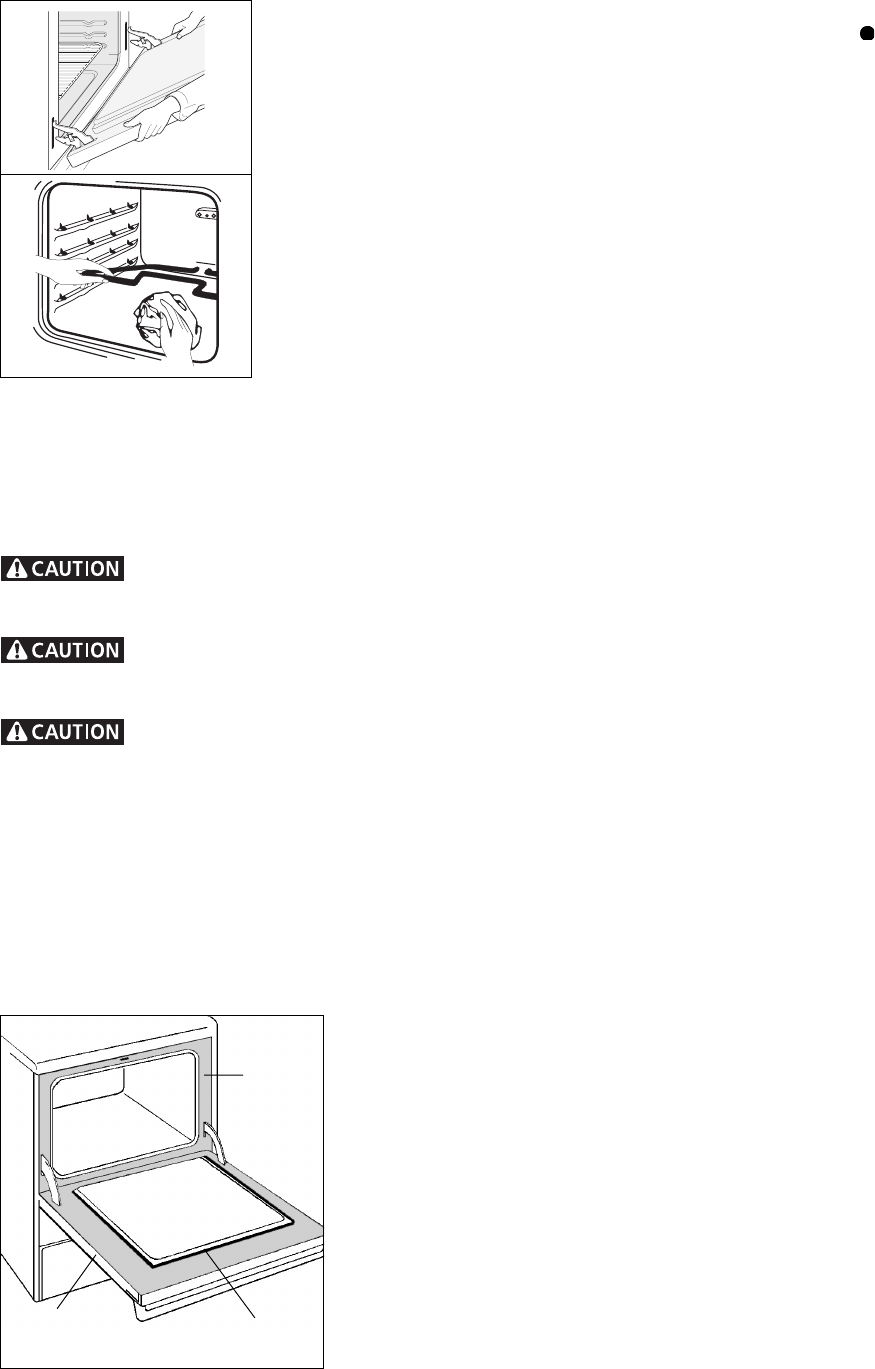
19
Cleaning the Appliance (continued)
Cleaning the Regular Oven (Non self-clean oven)
Make sure the oven is cool and that all control knobs are at OFF “
” position. Cleaning the
oven is a lot easier when the door is removed.
1. Remove the oven door; see “ To Remove and Replace Oven Door” section in this manual.
2. Empty the oven including the racks.
3. You can wash the broiler pan, grid and racks in the kitchen sink.
4. Clean oven lining thoroughly with soap and a wet cloth and wipe with a dry cloth.
To remove burned-on fat on oven walls, moisten soiled parts with household ammonia, using a
wet cloth. Follow suggested manufacturer’s cleaning method. (Do not remove the oven door
when using ammonia.)
Complete cleaning with a damp cloth and use a fine steel wool or scouring agent if necessary.
The lower element can be moved up for cleaning purposes.
5. Replace racks in the oven. Reinstall oven door.
Cleaning the Self-Clean Oven (some models)
Adhere to the following cleaning precautions:
• Allow the oven to cool before cleaning.
• Wear rubber gloves when cleaning any exterior parts of the oven manually.
During the self-cleaning cycle, the outside of the wall oven can become very hot to the touch. DO NOT leave small
children unattended near the appliance.
The health of some birds is extremely sensitive to the fumes given off during the self-cleaning cycle of any range.
Move birds to another well ventilated room.
Before cleaning any part of the oven, be sure the electronic oven control is turned off or else push CANCEL pad.
Wait until the oven is cool.
DO NOT use commercial oven cleaners or oven protective coatings in or around any part of the self-cleaning oven. DO NOT clean
the oven door gasket. The gasket on the oven door is essential for a good seal. Care should be taken not to rub, damage or move
the gasket. DO NOT use any cleaning materials on the gasket. Doing so could damage it. DO NOT use aluminum foil to line the
oven bottom. This may affect cooking or foil could melt and damage the oven surface.
A self-cleaning oven cleans itself with high temperatures (well above cooking temperatures) which eliminate soil completely or
reduce it to a fine powdered ash you can whisk away with a damp cloth.
Preparing the Oven for Self-Cleaning
1. Remove any excess spillovers in the oven cavity before starting the self-cleaning
cycle. To clean, use hot soapy water and a cloth. Large spillovers can cause heavy
smoke or fire when subjected to high temperatures. DO NOT allow food spills with
a high sugar or acid content (such as tomatoes, sauerkraut, fruit juices or pie filling)
to remain on the surface as they may cause a dull spot even after cleaning.
2. Clean any soil from the oven frame and the door liner (see illustration). These areas
heat sufficiently during a self-clean cycle to burn soil on. Clean with soap and
water.
3. Remove the broiler pan and insert, all utensils and any foil. These items do not
withstand high cleaning temperatures.
4. Oven racks may be left in the oven or may be removed. If they go through the clean
cycle, their colour will turn slightly dull. After the cycle is completed and the oven
has cooled, rub the sides of the racks with wax paper or a cloth containing a small
amount of baby oil or salad oil. This will make the racks glide easier.
Do Not Hand
Clean Seal
Do Hand
Clean
Frame
Do Hand
Clean Door



